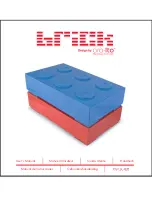
20
Percent of Cache Available to Non-‐Real-‐Time Writes:
This applies to the real-‐time us-‐
ers. You can actually dial-‐down the cache for writing for non-‐real-‐time users. This value
is a percentage. The default value of 50, indicates that real-‐time users only get a maxi-‐
mum of 50% of the cache. Setting this value too high would render this setting useless.
Setting it lower would further limit the cache for non-‐real-‐time users. Keep in mind, this
setting only applies to non-‐real-‐time users -‐ see below for real-‐time users. Note that this
setting applies globally to all non-‐real-‐time users.
Percent of Cache Available to Real-‐Time Writes:
This is the same as above, but only
applies to real-‐time users. The default value of 75 indicates that a real-‐time user gets
75% of the cache for writes. Setting the value higher could impact non-‐real-‐time users
more. Setting it lower gives up some of the cache to the non-‐real-‐time users. It's almost
the opposite of above. Note that this setting applies globally to all real-‐time users.
Max Data Rate of Non-‐Real-‐Time Requests (MB/SEC) 0 for no limit:
This allows you
to limit the bandwidth of non-‐real-‐time users in megabytes per second. It is used to free
up bandwidth for real-‐time users as well. The value entered here is in megabytes per se-‐
cond. The default value, 0, does not limit the maximum data rate for non-‐real-‐time users.
Max Number of Non-‐Real-‐Time Requests:
Another way of limiting non-‐real-‐time users
is to limit the amount of read/write commands they can send. Note that this setting af-‐
fects all non-‐ real-‐time users. The default value is 4. Setting the value lower would further
limit non-‐real-‐time users. Setting it higher would cache more requests.
Reconstruct in Advance of Drive Completion:
If a drive isn’t performing as well as the
rest, this option is used to base the data on the parity, instead of the data returned from
the drive. In many cases, this can compensate for a slow drive. This option is disabled by
default.
Reconstruction Priority (from 0 to 100):
The array is capable of reconstructing while
it is being used. This value controls the balance of priority given to reconstruction versus
the data access. The default value is 0, which means reconstruction is only performed
when the array is idle. If you set it to 100 (which is definitely not recommended), the ar-‐
ray would run very slowly to the clients, while reconstructing at full speed. So as an ex-‐
ample, consider a value of 10 -‐ This would mean that the array would spend 10% of it's
time while being accessed, doing reconstruction. The value is up to you -‐ the more time
and/or speed you can sacrifice while the array is being used to reconstruction, the faster
the reconstruct will complete.
Enable PQ Verification:
Default is No. This value is a form of error-‐detection and cor-‐
rection (Raid-‐6 only). If this value is enabled, while the array is reading, it will compare
the data read against the two parity generators -‐ there has to be a 3-‐way match between
the data and each of the two parity generators. If there isn't, the data from the parity gen-‐
erators is used instead of the data from the drive in question -‐ this substitution is made in
real-‐time. So basically, if the array detects something wrong in the data, it corrects it. En-‐
abling this option might affect read transfer rates.
QOS 8-Bay User Manual
QOS Server is a subsidary of Ocean Tides Productions Ltd. © Copyright 2013
















































